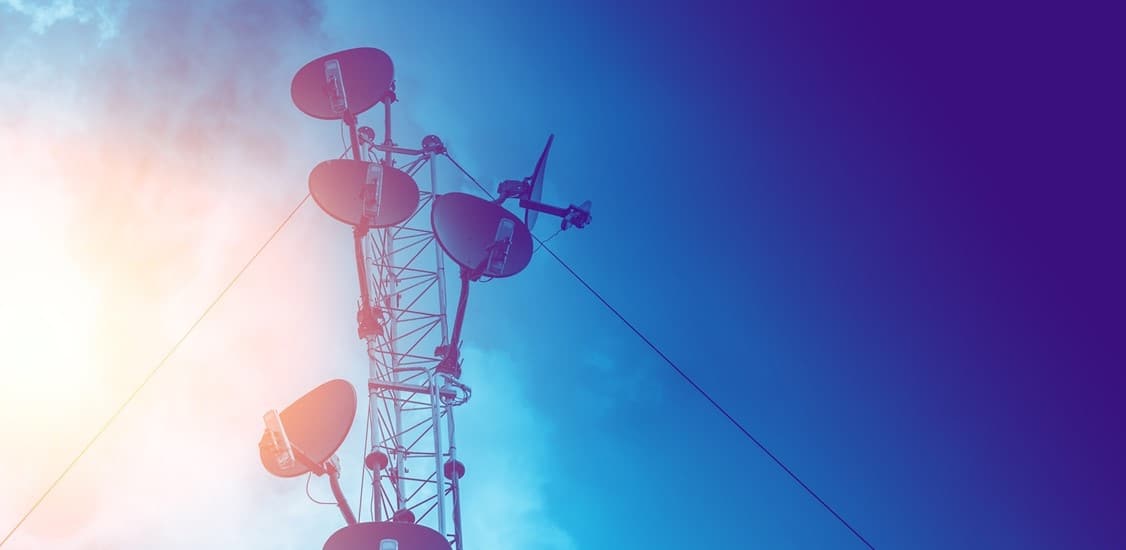Last year, there was much talk of 5G: when would networks be deployed, which operators were testing what, and which region would lead the 5G race? As the costs and complexities of rolling out the next generation standard have crystallised, however, the industry’s attitude has sobered. As such, 2019 will be a year for LTE.
We’ll see the impressive early results of LTE public safety networks, TfL progress with upgrading connectivity on the Tube, and building owners taking matters into their own hands. 5G is exciting, but an expensive and long-term strategy, so next year will also be characterised by cost-saving moves, as the value of long-term, future-proof solutions becomes clear.
#1: IoT connectivity requirements to be fulfilled by 4.5G
As the IoT expands, so do the scale of projects and applications. The industrial IoT (IIoT) will be characterised by sites with a high volume of connected devices and sensors - such as processing plants, mining and oil exploration, shipping ports - which require always-on, ultra-low latency, ultra-reliable and ultra-secure cellular connectivity. Signal in these environments often supports mission critical applications and needs to penetrate industrial-grade infrastructure, and hardware needs to withstand often harsh environments. Connectivity must be robust and reliable: failures, poor coverage and outages could risk to revenues and safety.
What does this mean for 2019? Whilst in the future, it’ll be 5G that facilitates the IIoT, next year we’ll see a demand from the IIoT sector for 4.5G, which can support a wide range of IoT services. 4.5G technology can co-exist with 5G when the networks arrive and will continue to be used for years to come. There will therefore be a demand for coverage systems that can support 4.5G today, and also be able to support 5G when the technology arrives. Networks must be inherently scalable and able to support a range of different radio frequencies which will be used by the IoT.
#2: Venue owners will take LTE into their own hands
The demand for high-capacity in-building coverage will continue to grow; most of us now expect to be able to use our phones wherever we go. Businesses like hotels, shopping centres, and sports stadiums require adequate mobile coverage not just to meet visitor expectations, but also to help unlock value-added in-venue services - these could include things like dedicated apps and navigation tools. LTE coverage is also required in office buildings and shared work spaces to fill in for patchy Wi-Fi, as well as emergency services communications.
For years, building owners have asked mobile operators for dedicated indoor cellular coverage, but little progress has been made. Failing to provide adequate coverage could seriously dent real estate lease rates, and as such we’ll see a growing number of venue owners taking LTE coverage into their own hands. Lacking technical experience and know-how, these parties will require value-added resellers and systems integrators to develop networks for them which are cost-effective and can support multiple operators. This model, called neutral host, enables a venue to own the network, and open it up to a number of different operators to supply connectivity.
#3: Operators will share infrastructure to lower costs
For years, operators have been reluctant to share hardware and network infrastructure, and have instead worked independently. However, the costs involved with building, deploying and maintaining network infrastructure mean that in many cases this approach is no longer tenable.
2019 will see growing acceptance in the industry of operators sharing infrastructure, in order to minimise costs and ensure that coverage demands from consumers and businesses can be met as quickly as possible. In the UK, we’ll see the results of Ofcom’s move - announced earlier this year - to introduce unrestricted access to Openreach’s underground ducts and telegraph poles, in order to expedite the deployment of fibre networks.
Large venues, such as stadiums, airports and shopping malls will be increasingly creating their own networks, which will be designed to be shared by multiple operators. This offers a great opportunity for operators to begin sharing infrastructure, and will establish a blueprint for cost-effective in-building connectivity for the future.
#4: Emergency services will reap the benefits of LTE data

Ingo Flomer,
VP of Business Development & Technology,
Cobham Wireless
Following years of development, in 2019 we’ll see the results of investments in LTE public safety networks and the delivery of data services for emergency services. Just how much progress is actually made will depend on budget management. Not only will current public safety infrastructure and solutions need to be upgraded and certified, but connectivity will have to be guaranteed throughout the period of transition from the old TETRA system to the new Emergency Services Network (ESN).
One of the major challenges that the ESN faces in the development of new functionality within LTE public safety networks. This includes push-to-talk and group chat functionality, which are not standardised services in today’s LTE networks and require new core, signal processing and radio interface protocols to be developed, which will take time.
Lincolnshire Police will serve as a litmus test for the capability of the technology, and its users. Motorola won the contract to deliver the first cloud-based, Control Room Solution (CRS) to the county’s police force, so we’ll see the results of this implementation at some point in the New Year. It’s important to remember though, that police officers are not tech specialists; training and support to use the new systems will be crucial to ESN’s success.
#5: TfL announcement will spur long-awaited upgrade
On to another project which has been talked up for years and is finally bearing fruit - 4G on the London Underground. The tender process has begun, and we’re eagerly awaiting details of the winning contracts, which will be announced in the New Year.
We first heard about an upgrade of the Tube’s coverage system about 20 years ago, since when there’s been a lot of back and forth! Fortunately, technology has improved over the past two decades, so that today, contractors will be able to overcome a whole host of challenges related to connecting the underground environment. Confined spaces, dust and damage from trains, and the sheer scale of the project (the 402km of track is comprised mostly of subterranean routes) place demands on both supplier experience and equipment.
What’s needed is a wireless coverage solution which comprises minimal hardware, yet provides maximum resilience and minimal signal loss, which is cost-and energy efficient, and supports multiple operators, as well as reliable public safety communications. Companies that have already proven to deliver on such projects are likely to be called into action to deliver 4G rapidly and cost-effectively. This is a project of national pride, so it’d be great to see as many UK-based companies as possible having the opportunity to contribute. As such, we’ll continue to keep a very close eye on news and updates from TfL during 2019!
#6: C-RAN and MEC come together
Mission critical IoT - and IIoT - applications will require processing power to move closer to the end-user, due to the demand for ultra-reliable, ultra-low latency connectivity. Think of a case like remote robotic surgery, where there has to be almost no lag time, and data has to be sent, received and processed in real time. Processing this data in a remotely-located data centre will not be enough; instead, processing power must move closer to the end-user. This is Mobile Edge Computing (MEC), and has been gaining momentum in recent years. It is, however, pretty expensive to deploy.
The C-RAN approach, whereby baseband processing is focussed and managed in one central location away from a venue, has already been identified as the critical network architecture for supporting the connectivity needs of the IoT. In 2019, we’ll see the convergence of the two technologies, with operators able to make cost savings by deploying C-RAN and MEC infrastructure together, rather than having to make separate, costly investments.




















